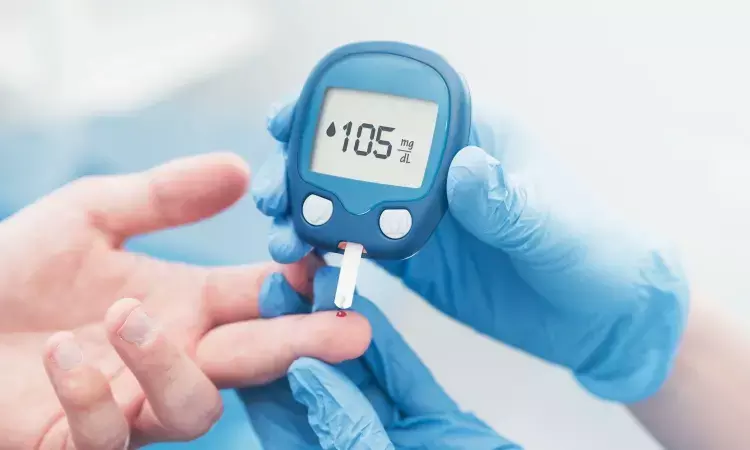- Home
- Medical news & Guidelines
- Anesthesiology
- Cardiology and CTVS
- Critical Care
- Dentistry
- Dermatology
- Diabetes and Endocrinology
- ENT
- Gastroenterology
- Medicine
- Nephrology
- Neurology
- Obstretics-Gynaecology
- Oncology
- Ophthalmology
- Orthopaedics
- Pediatrics-Neonatology
- Psychiatry
- Pulmonology
- Radiology
- Surgery
- Urology
- Laboratory Medicine
- Diet
- Nursing
- Paramedical
- Physiotherapy
- Health news
- Fact Check
- Bone Health Fact Check
- Brain Health Fact Check
- Cancer Related Fact Check
- Child Care Fact Check
- Dental and oral health fact check
- Diabetes and metabolic health fact check
- Diet and Nutrition Fact Check
- Eye and ENT Care Fact Check
- Fitness fact check
- Gut health fact check
- Heart health fact check
- Kidney health fact check
- Medical education fact check
- Men's health fact check
- Respiratory fact check
- Skin and hair care fact check
- Vaccine and Immunization fact check
- Women's health fact check
- AYUSH
- State News
- Andaman and Nicobar Islands
- Andhra Pradesh
- Arunachal Pradesh
- Assam
- Bihar
- Chandigarh
- Chattisgarh
- Dadra and Nagar Haveli
- Daman and Diu
- Delhi
- Goa
- Gujarat
- Haryana
- Himachal Pradesh
- Jammu & Kashmir
- Jharkhand
- Karnataka
- Kerala
- Ladakh
- Lakshadweep
- Madhya Pradesh
- Maharashtra
- Manipur
- Meghalaya
- Mizoram
- Nagaland
- Odisha
- Puducherry
- Punjab
- Rajasthan
- Sikkim
- Tamil Nadu
- Telangana
- Tripura
- Uttar Pradesh
- Uttrakhand
- West Bengal
- Medical Education
- Industry
Voice analysis may potentially screen and monitor diabetes

Voice synthesis involves the coordination of the respiratory system, the nervous system, and the larynx. High blood glucose levels over extended periods, as seen in T2DM, can affect the elasticity of the vocal cords. Long-term elevated glucose leads to complications such as peripheral neuropathy and myopathy, which can result in voice disorders and dysphagia. Additionally, T2DM has been linked to an increased prevalence of psychological disorders like depression and anxiety, which can cause vocal changes. Studies have shown distinct vocal differences between T2DM and nondiabetic individuals.
According to a recent study published in Mayo Clinic proceedings: Digital Health, Jaycee M. Kaufman and colleagues have said that Vocal changes are common in individuals with T2DM compared to those without. Voice analysis can serve as a prescreening or monitoring tool for T2DM when combined with other risk factors.
A total of 267 individuals, including 79 women and 113 men diagnosed as nondiabetic or T2DM according to American Diabetes Association guidelines, were recruited in India between August 30, 2021 and June 30, 2022. Participants recorded a fixed phrase up to six times daily using a smartphone application for two weeks, resulting in 18,465 recordings. Fourteen acoustic features were extracted from each recording to analyze differences between the patients and develop a methodology for predicting T2DM status.
Key findings are:
- The differences between voice recordings of nondiabetic and T2DM men and women were significant (both in the entire dataset and an age-matched and body mass index-matched sample).
- The highest predictive accuracy was achieved by pitch, pitch SD, relative average perturbation jitter for women, and intensity and 11-point amplitude perturbation quotient shimmer for men.
- The optimal prediction models, incorporating age and BMI, achieved accuracies of 0.75±0.22 for women and 0.70±0.10 for men through 5-fold cross-validation in the age-matched and BMI-matched samples.
They said, “We found distinct differences between the voices of individuals with and without T2DM.”
An ensemble model with T2DM prevalence and BMI for men and women achieved maximum test accuracy of 0.89 for women and 0.86 for men. The optimal models were a 2-vocal-feature NB implementation for men and a 3-vocal-feature LR for women.
Women with T2DM had a slightly lower pitch with less variation, while men with T2DM had slightly weaker voices with more variation due to differences in disease symptom manifestations between the sexes.
Although further research with larger and more diverse cohorts is needed, our findings suggest that voice analysis could be an accessible and cost-effective screening tool for T2DM. The author writes that voice assessment could aid in early intervention and management, potentially reducing the disease burden and improving health outcomes.
Reference:
Kaufman, J., Thommandram, A., & Fossat, Y. (2023). Acoustic analysis and prediction of Type 2 diabetes mellitus using Smartphone-Recorded voice segments. Mayo Clinic Proceedings Digital Health, 1(4), 534–544. https://doi.org/10.1016/j.mcpdig.2023.08.005
BDS, MDS in Periodontics and Implantology
Dr. Aditi Yadav is a BDS, MDS in Periodontics and Implantology. She has a clinical experience of 5 years as a laser dental surgeon. She also has a Diploma in clinical research and pharmacovigilance and is a Certified data scientist. She is currently working as a content developer in e-health services. Dr. Yadav has a keen interest in Medical Journalism and is actively involved in Medical Research writing.
Dr Kamal Kant Kohli-MBBS, DTCD- a chest specialist with more than 30 years of practice and a flair for writing clinical articles, Dr Kamal Kant Kohli joined Medical Dialogues as a Chief Editor of Medical News. Besides writing articles, as an editor, he proofreads and verifies all the medical content published on Medical Dialogues including those coming from journals, studies,medical conferences,guidelines etc. Email: drkohli@medicaldialogues.in. Contact no. 011-43720751


